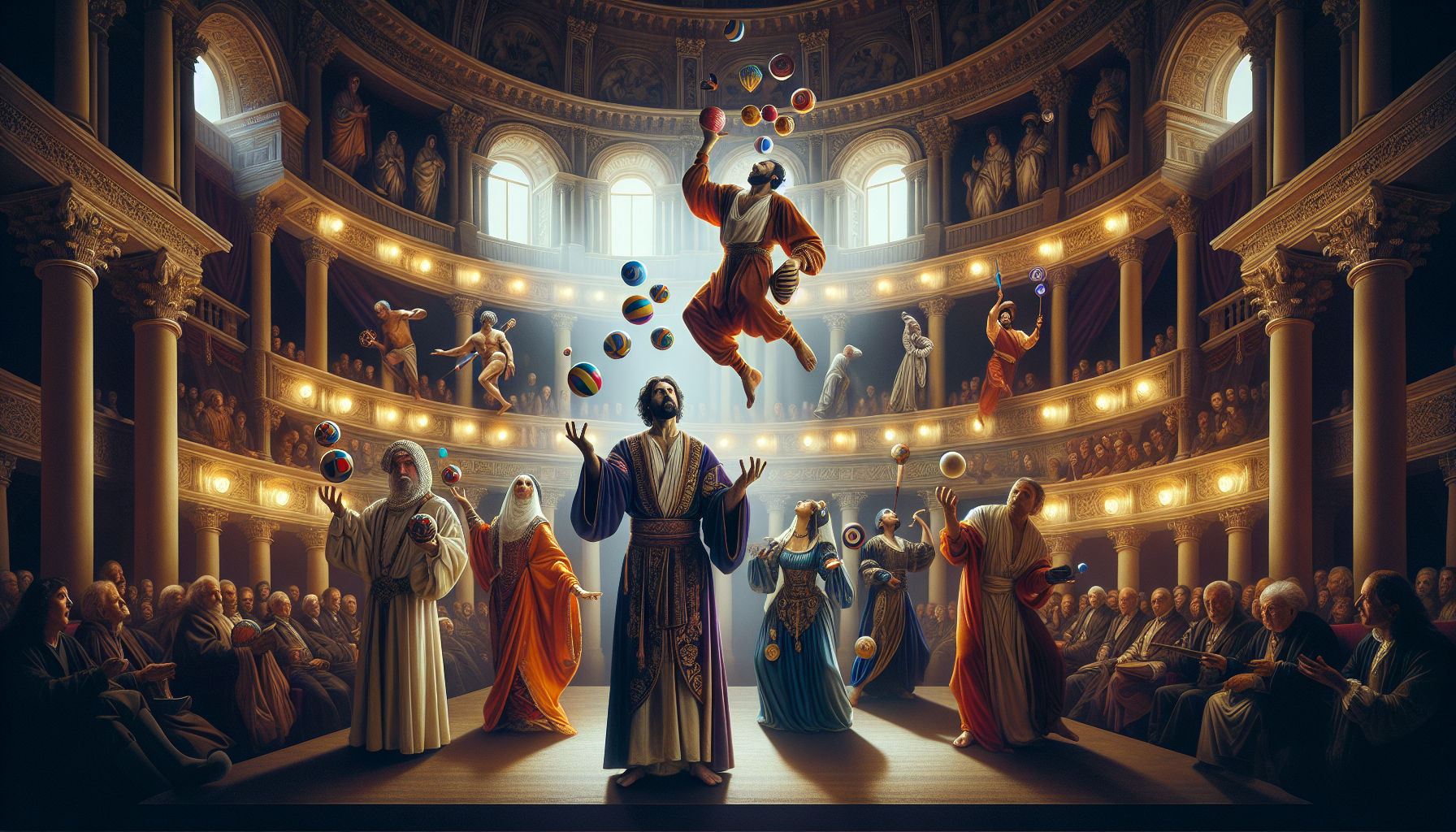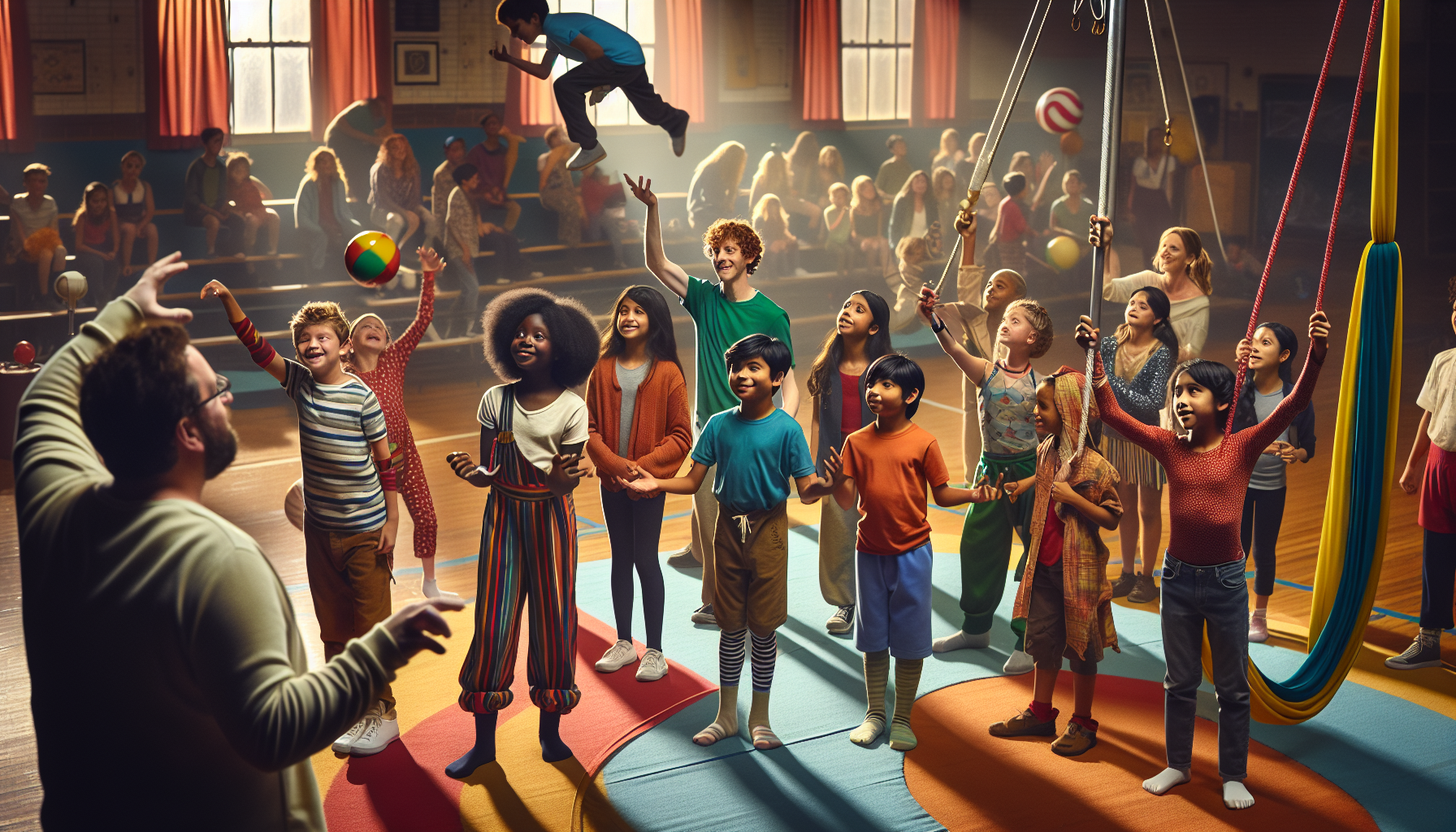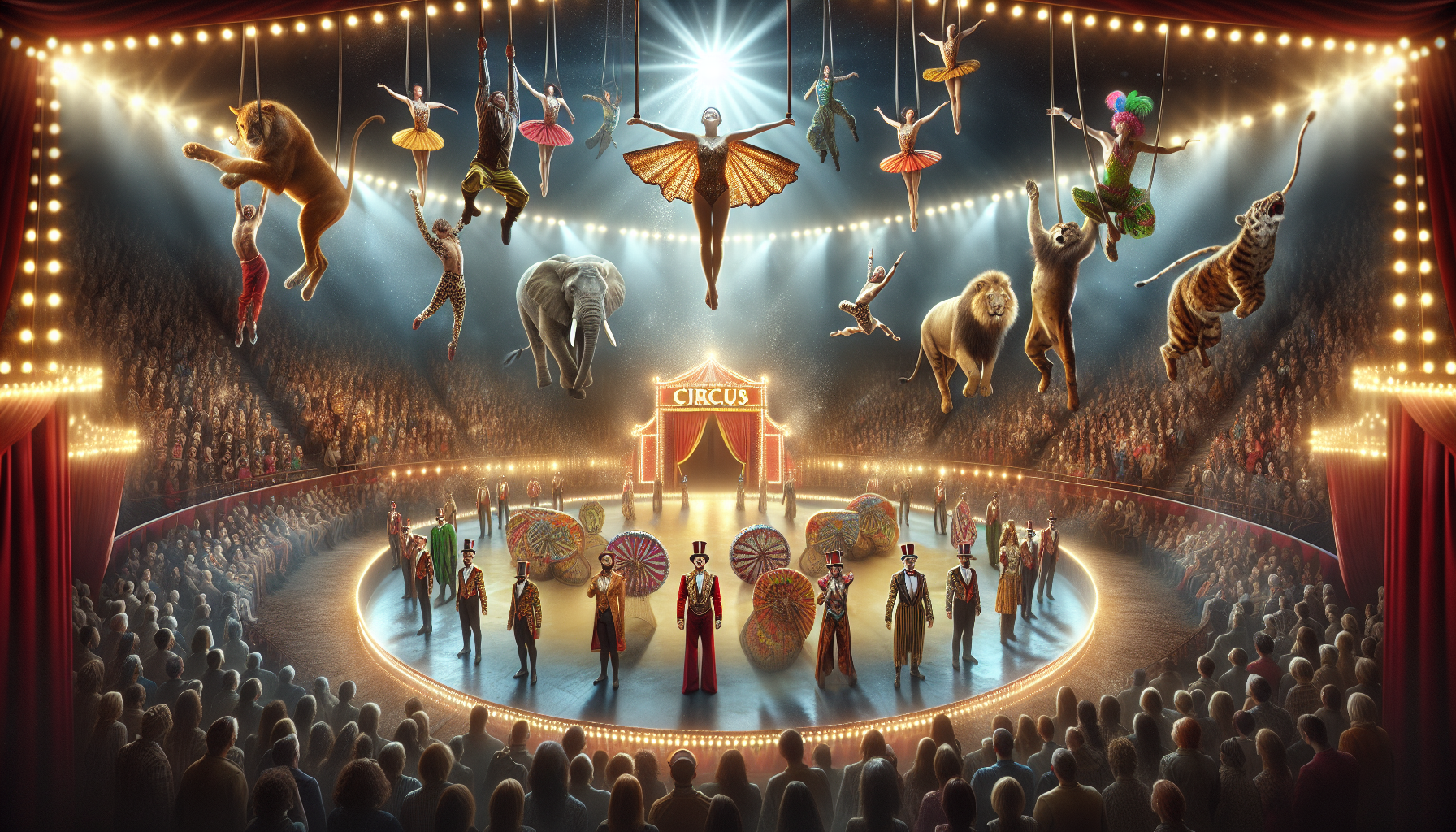In a world where gravity is the ultimate opponent, a select few have mastered the art of defying it with grace and precision. Juggling, a captivating blend of rhythm, dexterity, and creativity, has entranced audiences for centuries. Yet, within this art form, there exist legendary figures who have propelled juggling to extraordinary heights, leaving an indelible mark on both history and culture.
This post delves into the fascinating lives and remarkable achievements of these juggling virtuosos. From the grand stages of international festivals to intimate street performances, these individuals have captivated audiences with their unparalleled skills and innovative techniques. Discover the stories behind their success, their contributions to the evolution of juggling, and the unique flair each brought to the craft.
Explore how these master jugglers pushed the boundaries of possibility, transforming simple acts into complex spectacles that challenged perceptions of what juggling could be. Their influence extends beyond entertainment, inspiring new generations to embrace juggling not just as a skill, but as a form of artistic expression and a testament to human ingenuity.
Join us as we unveil the secrets behind the legends of juggling, celebrating their artistry, dedication, and the enduring legacy they have left in the world of performance art. Whether you’re a juggling enthusiast or simply curious about the mesmerizing world of this dynamic craft, prepare to be amazed by the stories of those who turned juggling into an art form that continues to dazzle and inspire.
The Evolution of Juggling
Juggling, as an art form, has evolved dramatically over the centuries. From its early roots in ancient civilizations to the sophisticated performances we see today, juggling has been a testament to human dexterity and creativity. Initially perceived as mere entertainment, juggling has developed into a respected discipline, requiring both physical agility and mental acuity.
The earliest records of juggling date back to ancient Egypt, where performers would entertain pharaohs and nobles with their skillful displays. As juggling spread across cultures, each region added its unique flair. In medieval Europe, jugglers were often part of traveling minstrel shows, captivating audiences with their acrobatics and wit. The art form was also popular in Asia, where jugglers performed in royal courts and public festivals, often incorporating elements of traditional dance and theater.
With the advent of the circus in the 18th century, juggling found a new platform. Performers began experimenting with various objects, from balls and rings to more unconventional items like knives and torches. This era saw the rise of juggling as a professional pursuit, with artists dedicating their lives to perfecting their craft. Today, juggling is not just confined to the circus but is celebrated in festivals and competitions worldwide, highlighting its enduring appeal and versatility. 🤹♂️
Legendary Jugglers and Their Impact
Enrico Rastelli: The Maestro of Juggling
Enrico Rastelli is often hailed as one of the greatest jugglers of all time. Born in 1896 in Italy, Rastelli’s talent was evident from a young age. He came from a family of performers, and his natural ability quickly set him apart. Rastelli was known for his incredible precision and speed, often juggling up to ten balls simultaneously. His performances were not just about skill; they were artistic expressions, blending rhythm, balance, and showmanship.
Rastelli’s influence on juggling is immeasurable. He introduced new techniques and styles, inspiring generations of jugglers. Even today, his routines are studied by aspiring artists looking to emulate his seamless flow and control. His legacy lives on, not just in the juggling community, but in the broader world of performance art, where his innovations continue to resonate.
Anthony Gatto: A Modern Prodigy
Anthony Gatto is another name that stands out in the world of juggling. Known for breaking multiple world records, Gatto’s precision and technical prowess are unmatched. Born in 1973 in the United States, he began juggling at a young age and quickly rose to prominence. By the age of nine, Gatto was already a world champion, showcasing his extraordinary talent.
Gatto’s performances are characterized by their complexity and flawless execution. He has juggled in prestigious venues worldwide, including Cirque du Soleil, where his acts mesmerized audiences. Beyond his performances, Gatto’s contribution to juggling includes his instructional videos and workshops, where he shares his techniques and insights with upcoming artists. His dedication to the craft has inspired many to pursue juggling professionally, ensuring the art form’s continued evolution and growth.
Juggling in Modern Media
Juggling has transcended traditional performance venues, finding its place in modern media and popular culture. With the rise of the internet and social media platforms, jugglers now have a global stage to showcase their talent. Online platforms like YouTube and Instagram have become popular avenues for jugglers to share their routines and connect with audiences worldwide.
This digital exposure has led to a resurgence of interest in juggling, attracting a new generation of enthusiasts eager to learn and innovate. Juggling competitions and festivals are now live-streamed, allowing fans from all corners of the globe to witness the latest trends and techniques. This online presence has also facilitated the exchange of ideas and styles, leading to exciting collaborations between jugglers from different cultural backgrounds.
Moreover, juggling has made its way into film and television, with performers often being featured in talent shows and movies. This visibility has helped break down stereotypes and broaden the public’s perception of juggling as a legitimate and dynamic art form. As technology continues to evolve, so too will the ways in which juggling is shared and celebrated. 📱🎥
Techniques and Innovations in Juggling
The art of juggling is not static; it is constantly evolving as jugglers push the boundaries of what is possible. Over the years, numerous techniques and innovations have emerged, challenging traditional norms and introducing fresh perspectives.
One of the most significant innovations in juggling is the development of “contact juggling,” popularized by performers like Michael Moschen. Unlike traditional juggling, where objects are tossed into the air, contact juggling involves manipulating objects while they remain in contact with the body. This style emphasizes fluidity and grace, often incorporating elements of dance and mime.
Another modern innovation is “site swap,” a mathematical notation system used to describe juggling patterns. This system has revolutionized the way jugglers approach their routines, allowing for greater experimentation and creativity. By understanding the numerical patterns of site swap, jugglers can invent new sequences, pushing the art form to new heights.
- Traditional Toss Juggling
- Contact Juggling
- Site Swap Juggling
- Glow and LED Juggling
- Prop Manipulation
The use of technology has also influenced juggling. LED and glow-in-the-dark props have added a new visual dimension to performances, captivating audiences with dazzling light displays. These innovations not only enhance the aesthetic appeal of juggling but also offer performers new ways to engage with their audiences.
The Future of Juggling
As we look to the future, the potential for juggling is limitless. With each new generation of performers, the art form continues to evolve, blending tradition with innovation. The integration of technology, such as virtual reality and augmented reality, offers exciting possibilities for jugglers to create immersive experiences that captivate and inspire audiences.
Moreover, the global community of jugglers is more connected than ever, thanks to online forums and social media platforms. This interconnectedness fosters collaboration and the sharing of ideas, ensuring that juggling remains a dynamic and inclusive art form. As cultural exchange continues to flourish, we can expect to see new styles and techniques emerge, reflecting the diverse backgrounds and perspectives of jugglers worldwide.
Education and outreach are also playing a crucial role in the future of juggling. Many organizations and schools are incorporating juggling into their curricula, recognizing its benefits in enhancing coordination, concentration, and creativity. These initiatives not only nurture the next generation of jugglers but also promote the art form as a valuable tool for personal development.
In summary, the future of juggling is bright and full of promise. As artists continue to innovate and push boundaries, juggling will undoubtedly remain a beloved and respected art form, celebrated for its rich history, vibrant present, and exciting future. 🌟🤹♀️

Conclusion
In conclusion, the art of juggling has transcended its ancient origins to become a celebrated and dynamic discipline, captivating audiences around the world. The journey from the courts of pharaohs to the global digital stage illustrates the remarkable evolution of this art form. Legendary figures like Enrico Rastelli and Anthony Gatto have elevated juggling to new heights, each leaving an indelible mark with their groundbreaking performances and contributions. Their legacies continue to inspire jugglers to explore new techniques and push creative boundaries.
The influence of modern media and technology has played a pivotal role in juggling’s resurgence. Online platforms have democratized the art form, allowing aspiring jugglers to share their talents and connect with a global community. This digital era has sparked innovation, with contemporary jugglers embracing cutting-edge props and immersive experiences to captivate audiences anew.
Looking ahead, the future of juggling shines brightly. As performers integrate advanced technologies like virtual reality and augmented reality, the possibilities for immersive experiences are endless. Education and outreach further reinforce juggling’s status as a valuable skill, fostering creativity, coordination, and concentration. With a rich heritage and an exciting future, juggling remains a dynamic art form, celebrated for its creativity, adaptability, and enduring appeal. 🌟
Toni Santos is a visual storyteller and archival artisan whose creative journey is steeped in the bold colors, dramatic typography, and mythic imagery of old circus posters. Through his artistic lens, Toni breathes new life into these once-lurid canvases of wonder, transforming them into tributes to a golden era of spectacle, showmanship, and cultural fantasy.
Fascinated by the visual language of vintage circuses — from roaring lions to gravity-defying acrobats, from hand-painted banners to gothic typefaces — Toni explores how these posters once captured the imagination of entire towns with nothing more than ink, illusion, and a promise of awe. Each composition he creates or studies is a dialogue with history, nostalgia, and the raw aesthetics of entertainment on the move.
With a background in handcrafted design and visual heritage, Toni blends artistic sensitivity with historical insight. His work traces the forgotten typographies, chromatic choices, and symbolic flair that defined circus marketing in the 19th and early 20th centuries — a time when posters were not just advertisements, but portable portals to dreamworlds.
As the creative force behind Vizovex, Toni curates collections, illustrations, and thoughtful narratives that reconnect modern audiences with the magic of old circus art — not just as ephemera, but as cultural memory etched in paper and pigment.
His work is a tribute to:
The flamboyant storytelling of early circus posters
The lost art of hand-lettered show promotion
The timeless charm of visual fantasy in public space
Whether you’re a vintage print enthusiast, a circus history lover, or a designer inspired by antique aesthetics, Toni invites you into a world where tigers leap through fire, strongmen pose in perfect symmetry, and every corner of the poster whispers: Step right up.





